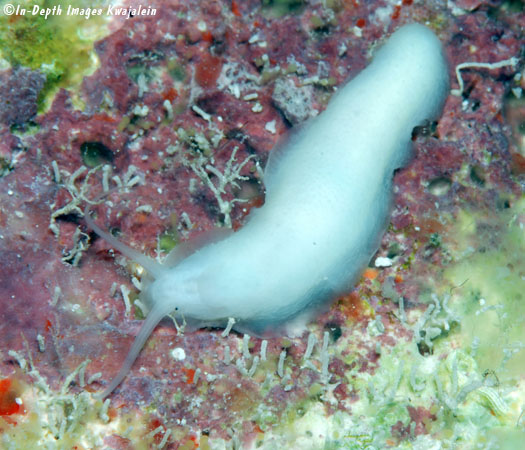


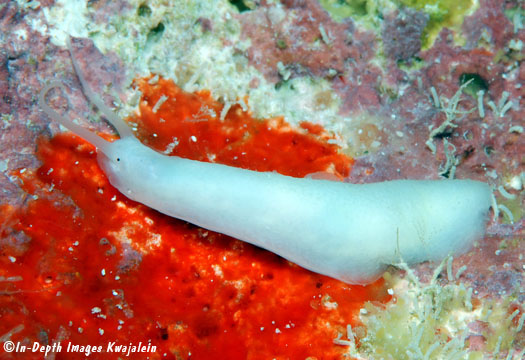
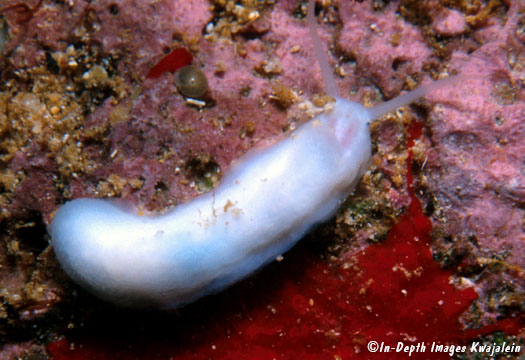
An opening to the mantle cavity which contains the gill is dorsal, just behind the head.

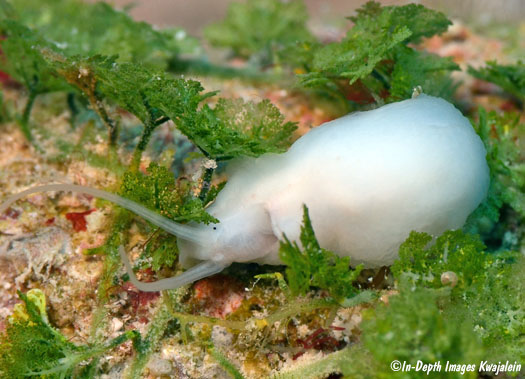

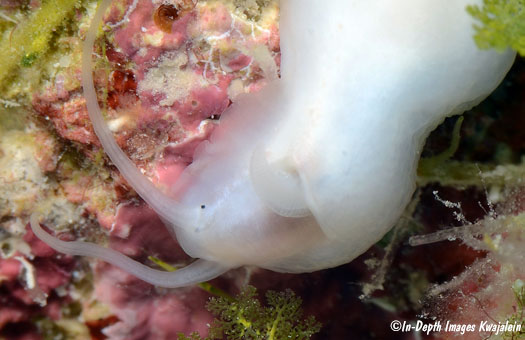
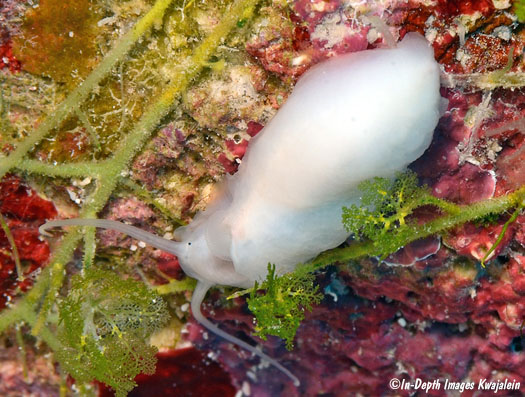
A specimen found in Majuro Atoll by Ken Cone and Beth Van Zummeren (below) had a much more distinctive pattern visible on the animal.


The white dots in two lines along the length of the body are reported to be glands that release a white defensive chemical when the animal is disturbed.

Although the species supposedly completely lacks a shell as adults, the damaged individual in the two photos below almost looks like it has a thin, smooth shell behind the eyes where the outer skin has peeled back, behind which is the mantle cavity containing the gill.
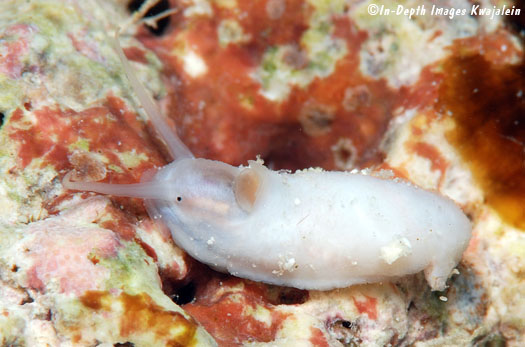
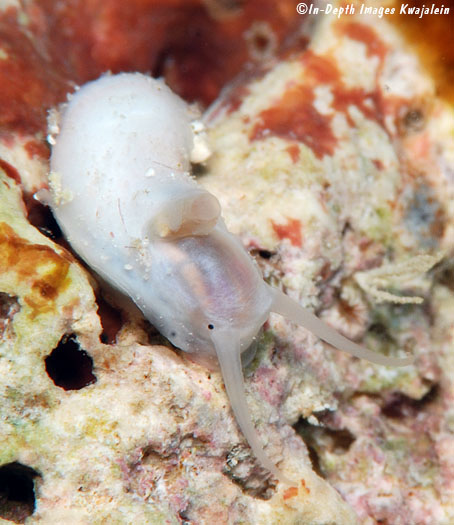
Updated 2 September 2021